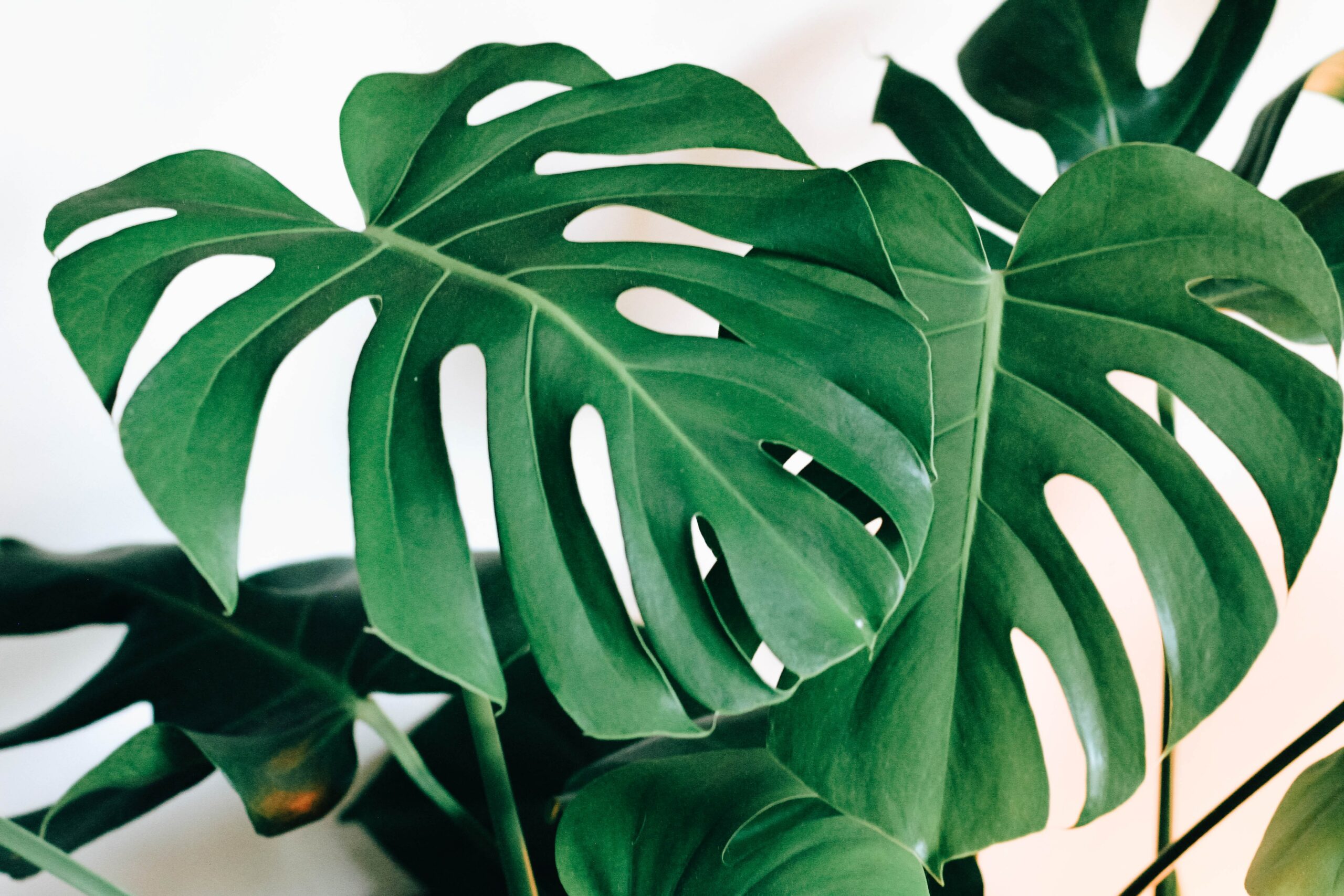If you’ve ever seen a Monstera Deliciosa, you know why it’s aptly called the “Swiss Cheese Plant.” Its unique foliage is filled with holes like Swiss cheese, making it one of the most popular houseplants on the market today. This tropical plant is easy to care for and adds a touch of lushness to any room. Like a beautiful oasis in an otherwise dreary desert, the Monstera Deliciosa can bring life and vitality to your home or garden.
Caring for this tropical beauty is not difficult, but there are some tips and tricks that will make your plant thrive. With the right combination of nutrients, light, water, and humidity, your Monstera Deliciosa will reward you with its exotic foliage and stunning flowers. From soil selection to pruning techniques, this article will provide all the information you need about growing and caring for a Monstera Deliciosa.
Unlike other houseplants that require near perfect conditions to survive, Monsteras have some wiggle room when it comes to their care requirements. Whether you are a beginner or an experienced gardener looking for new ideas on how to care for this unique plant, this comprehensive guide provides all the information you need to keep your Monstera Deliciosa looking its best!
Overview Of Monstera Deliciosa
It’s ironic that the Monstera deliciosa’s common name is “delicious monster,” because it’s anything but! This beautiful tropical plant has lush green leaves with deep splits and holes, making it a unique and stunning addition to any home. But growing this exotic houseplant isn’t just about looks–it also comes with plenty of care requirements.
The Monstera deliciosa can be grown indoors or outdoors, in either full sun or partial shade. The soil should be well draining, and the plant should be watered regularly during the growing season (spring through fall) but not allowed to become overly soggy. For best results, fertilize your Monstera deliciosa every two weeks while actively growing, using a balanced fertilizer diluted to half its strength.
You’ll also need to keep an eye on humidity levels, as this tropical plant prefers high humidity. Fortunately, this is easy enough to do by misting the leaves daily or using a humidifier in its environment. Pruning may also be necessary occasionally to help control size and shape. With all these tips in mind, you’ll soon have a healthy and happy Monstera deliciosa in your home! Moving on…
Choosing A Monstera Deliciosa Plant
What kind of Monstera deliciosa should you get? When shopping for this plant, how can you make sure you purchase the right one?
When looking for a Monstera deliciosa plant, pay attention to its size. If it’s too small, it may not be mature enough and could take a while before it starts growing. On the other hand, if the plant is too big, it might already be root bound and can cause difficulty in repotting. You also want to make sure that there are no signs of rotting or brown spots on the leaves or stems. These are signs of poor care and may lead to problems with your plant further down the line.
Finally, look for healthy foliage and check for any pests. This tropical plant can be vulnerable to mealybugs, spider mites, and aphids so keep an eye out for any of these things when selecting your Monstera deliciosa. Make sure all the leaves are intact and there aren’t any broken off pieces at the base of the stem which could indicate pest infestation or disease.
Now that you know how to pick the perfect Monstera deliciosa, it’s time to ensure that it gets all the light it needs to thrive!
Light Requirements For Monstera Deliciosa
When it comes to light requirements for Monstera deliciosa, the best option is bright, indirect sunlight. This means placing the plant near a window that is not exposed to direct rays of sun. In addition, the ideal location should be away from drafts and vents which can cause extreme temperatures that can damage the plant. Although Monstera deliciosa does require some light to thrive, too much of it can be detrimental. Direct sunlight can burn its leaves and scorch them, leading to discoloration and brown patches on its foliage. Additionally, when exposed to too much light, the stems tend to become leggy and weak as they stretch towards the light source. Therefore, it is important to find a balance between enough light and too much of it in order to provide an optimal growth environment for your Monstera deliciosa. With the right amount of light, you will be rewarded with lush green foliage and vibrant leaves that will add life and beauty to your home. Next up is understanding what kind of water requirements are needed for a healthy Monstera deliciosa plant.
Water Requirements For Monstera Deliciosa
Now that you know the light requirements for Monstera Deliciosa, it’s time to move on to the water requirements. While Monstera Deliciosa plants can be quite forgiving when it comes to light, they require more precise watering habits in order for them to thrive. It’s important to remember that overwatering is a surefire way to kill your plant, so follow these tips closely.
When it comes to watering your Monstera Deliciosa, you’ll want to water deeply and consistently. Although this plant is fairly drought tolerant, it prefers moist soil and will benefit from regular watering. You should check the soil weekly by sticking your finger in the soil up to your knuckle; if the soil feels dry then it’s time to give your plant some water. When you do water, make sure that you water until excess starts draining out of the bottom of the pot – this ensures that all parts of the soil are getting evenly hydrated.
Finally, avoid leaving standing water in the tray or saucer beneath your pot; this can cause root rot and other issues for your plant. Keeping an eye on how often you’re watering and how much is key; too little or too much can both spell disaster for Monstera Deliciosa plants! Knowing what kind of soil mix works best for this type of plant is also essential for its health and growth.
Soil Requirements For Monstera Deliciosa
Ah, soil requirements for monstera deliciosa. Why bother? Isn’t it enough to just dump a bag of soil and call it a day? Well, the answer is no, you have to be more particular in selecting the right type of soil for your Monstera deliciosa.
In fact, if you choose the wrong type of soil, your Monstera deliciosa might end up wilting away before you can say Jack Robinson. To ensure that doesn’t happen, I guess we’d better jump into this step and find out what kind of soil is best for these exotic plants.
The ideal soil mix should contain an equal ratio of loam and peat moss with some perlite or vermiculite added to it as well. In addition to that, you’ll also need to make sure that the soil retains moisture but also allows good drainage. Adding some compost or fertilizer will also provide additional nutrients and help your Monstera deliciosa thrive.
So there you have it – all the information you need to make sure your Monstera deliciosa stays healthy! Now let’s move on to temperature requirements to ensure these majestic plants grow in the best conditions possible…
Temperature Requirements For Monstera Deliciosa
Like a chameleon, Monstera deliciosa adapts to its environment. This tropical plant will thrive with the right temperature requirements. Keeping the temperature consistent is key for the plant’s health and growth.
Monstera deliciosa prefers temperatures between 65-80°F (18-27°C). If temperatures dip lower than 60°F (15°C), it may cause damage to the leaves or even death. Alternatively, if temperatures exceed 90°F (32°C), your plant may suffer from drooping leaves and wilting stems. To ensure your Monstera deliciosa remains healthy, try to keep the temperature consistent as much as possible.
If your home is too cold or hot for Monstera deliciosa, you can always move it slightly closer or further away from a window or doorway to adjust the temperature accordingly. With these tips in mind, you should have no problem finding an ideal spot for your plant to live happily! Now that we’ve discussed the temperature requirements of this beautiful houseplant, let’s move on to understanding its humidity needs.
Humidity Requirements For Monstera Deliciosa
Humidity requirements are an important part of growing Monstera deliciosa. While this plant can tolerate a range of humidity levels, it does best in areas with at least 40 to 50 percent relative humidity. To achieve this level of moisture for your plant, you can mist it with water several times per week or use a humidifier near the plant. It’s also important to make sure that your Monstera doesn’t sit in a pool of standing water, as this could lead to root rot and other issues.
When it comes to watering the Monstera deliciosa, the key is to not over-water it. This means only water when the top inch or two of soil are dry and always pour out any excess water from drainage trays when done. Too little humidity can cause brown spots on leaves and leaf tips, so be sure to monitor your plant for signs of dryness if you live in an area with low humidity levels. Additionally, avoid placing your Monstera near air conditioners and vents where air circulation may be too strong for its liking.
Finally, proper ventilation is key for keeping your Monstera healthy and happy. Make sure there is adequate airflow around the plant by keeping windows open or using a fan set on low speed near the pot. This will help circulate fresh air around the leaves and keep them hydrated while preventing fungal diseases caused by stagnant air. By providing your Monstera with these proper care requirements, you can enjoy its lush foliage for years to come! Now let’s look at how to fertilize Monstera deliciosa for optimal growth.
Fertilizing Monstera Deliciosa
Fertilizing Monstera deliciosa may seem like an unnecessary step in caring for this tropical houseplant, but it’s actually essential to keeping the plant happy and healthy. Without regular fertilization, these plants can become sluggish and slow their growth. While some people think that providing a fertilizer is too much effort, doing so only takes a few minutes each month and can lead to lush foliage and more flowers.
When fertilizing Monstera deliciosa, use a balanced liquid fertilizer with an NPK ratio of 20-20-20 (nitrogen-phosphorous-potassium). Dilute the fertilizer to half its strength before applying it at the base of the plant once every two weeks during the growing season. Water your plant as usual after each application – never pour any fertilizer directly onto the leaves as this may cause damage. Additionally, make sure not to overfertilize as this can burn your plant’s roots!
To ensure that you’re giving your Monstera deliciosa all of the care it needs, pruning is another important step that should be done regularly. Pruning helps maintain a compact size and shape while also removing dead or dying leaves and stems. With proper care and attention, these beautiful plants can thrive in almost any environment!
Pruning Monstera Deliciosa
Pruning is an important part of caring for a monstera deliciosa plant. According to the Royal Horticultural Society, up to 20 percent of a monstera’s stems can be pruned without adversely impacting the health of the plant. This means that gardeners can safely trim away dead or excess foliage to encourage healthy growth.
When pruning a monstera deliciosa, it’s important to use sharp, clean scissors and make sure that all cuts are made at an angle. This will help prevent damage to the stem and encourages proper healing after cutting. Additionally, gardeners should only prune away foliage that is obviously dead or damaged — never take off more than 20 percent of the stems at once.
Carefully pruned plants will benefit from improved air circulation and light penetration, which in turn helps promote vigorous growth and lush foliage. With regular maintenance, gardeners can enjoy a thriving Monstera deliciosa for years to come! With these basics covered, let’s move on to exploring common pests and diseases for Monstera deliciosa.
Common Pests And Diseases For Monstera Deliciosa
It’s natural to feel a little hesitant when it comes to dealing with pests and diseases in plants. After all, no one wants their beloved Monstera deliciosa to become sick or infested. However, with the right knowledge and care, you can protect your plant from any nasty surprises.
So what kind of pests or diseases should you look out for? Common problems include mealybugs, thrips, aphids, and scale insects – all of which can be treated with insecticidal soap or neem oil. Other issues like root rot and leaf spot can also occur if the soil is too wet or if there is a lack of air circulation. To prevent these issues from occurring, make sure that your plant gets sufficient light and water only when needed.
Fortunately, there are a few simple steps you can take to keep your Monstera deliciosa healthy and happy. Start by inspecting the leaves regularly for bugs and signs of disease. If you identify any problems early on, then it will be much easier to treat them before they cause too much damage. Additionally, make sure that your plant has enough room to grow – overcrowding can lead to conditions that allow pests and diseases to thrive. With these tips in mind, you’ll be well on your way towards propagating beautiful Monsteras!
Propagating Monstera Deliciosa
Propagating monstera deliciosa is like a gardener’s art form. It can be a bit tricky but with the right materials, knowledge, and care, you have the potential to grow a beautiful monstera deliciosa of your own. To propagate this plant, you will need two main items: sterilized pruning shears and well-draining soil. Firstly, cut off a stem or shoot with the pruning shears and make sure that it has at least one leaf node attached to it. Then, let that cutting sit for a few days so that it can callous over before planting it in the well-draining soil. Lastly, be sure to give your cutting plenty of indirect sunlight and water regularly as it establishes itself.
Once your cutting has been planted and established itself in its new home, you can expect to begin seeing new growth within several weeks. With proper care and attention, your propagation efforts should prove successful! Keep an eye out for any signs of distress such as wilting leaves or yellowing foliage so that you can take action quickly if needed.
From there, repotting your newly propagated monstera deliciosa into a bigger pot is the next step in its journey towards becoming a fully grown plant. Repotting gives the roots room to stretch out and expand while allowing more room for soil amendments like fertilizer or compost if desired.
Repotting Monstera Deliciosa
The lush foliage of Monstera deliciosa is a delight to behold. But in order to keep it healthy, you need to be willing to work hard and put in the effort. Repotting your Monstera deliciosa is one part of this process.
Repotting your Monstera deliciosa should be done every two years, or whenever the roots become too big for the pot. To ensure optimal growth, choose a well-draining potting mix that is slightly acidic with a pH of 6.5. You should also make sure there are drainage holes at the bottom of the pot so that excess water can escape easily.
When repotting, do not plant too deeply; instead, leave some space between the top of the soil and the rim of the pot for watering. Once potted, water your Monstera deliciosa thoroughly and place it in a location that receives plenty of indirect sunlight. With proper care and attention, your Monstera deliciosa will thrive! Not only will it look beautiful but also provide an array of benefits such as air purification and stress relief. Moving on from repotting, let’s look at troubleshooting tips for Monstera deliciosa next.
Troubleshooting Tips For Monstera Deliciosa
It may surprise you to know that the Monstera Deliciosa, or Swiss Cheese Plant, is the second most popular houseplant in the world! As such, it’s important to understand what can go wrong when growing this unique tropical plant. In this article, we’ll explore some troubleshooting tips for Monstera Deliciosa.
If you’ve been having trouble with your Monstera Deliciosa’s growth rate, it could be due to over-watering or a lack of humidity in your home environment. Make sure you’re not overwatering your plant and that you keep its soil moist but not soggy. Additionally, consider investing in a humidifier to help increase the humidity around the plant.
Another issue might be yellow leaves or brown leaf spots – both are signs of too much direct sunlight. Move your Monstera away from any windows so it’s not getting too much light and ensure it doesn’t get exposed to temperatures below 60°F (15°C). If you do these things correctly, then you should see an improvement in your plant’s health.
With these helpful tips in mind, let’s move on to discussing the benefits of growing Monstera Deliciosa!
Benefits Of Growing Monstera Deliciosa
Growing monstera deliciosa is like a breath of fresh air for your home; it’s a beautiful and rewarding addition to any living space. It offers more than just aesthetic appeal, however – let’s take a look at the amazing benefits you can expect from nurturing this tropical plant.
First, monstera deliciosa is an incredibly hardy plant that can thrive in almost any condition. It’s easy to care for and doesn’t require much maintenance – all you really need to do is make sure it gets enough light and water. Plus, its unique foliage adds texture and vibrancy to any room, making it a great choice for adding life to dull spaces.
What’s more, growing monstera deliciosa helps purify the air in your home. Its large leaves absorb toxins from the environment, providing cleaner air for you and your family. Additionally, its roots help keep the soil moist and well-aerated, which reduces the risk of pests or disease that could harm other plants around it.
With so many advantages of growing monstera deliciosa, it’s no wonder why this plant has become so popular! Now that we’ve explored these benefits, let’s move on to some tips on how best to care for this tropical beauty.
Tips For Growing Monstera Deliciosa
As a living work of art, the Monstera deliciosa has long been admired for its unique foliage and hardiness. However, if you want to ensure that your plant thrives, it’s important to understand the basics of its care. Here are fifteen tips for growing Monstera deliciosa that can help you get started:
First, provide adequate light without direct sun exposure. This tropical beauty needs bright but indirect light in order to flourish. You can also move it around different locations in your home or office throughout the day to get optimal growth.
Second, water regularly and keep the soil moist. It’s best to wait for the top inch of soil to dry out before watering again as this will prevent root rot from occurring. To do this successfully, make sure you have a pot with good drainage and use lukewarm water when giving it a drink.
Finally, fertilize your plant every few months with an appropriate fertilizer according to the instructions on the package. Prune it back once or twice a year to stimulate new growth and remove dead leaves as needed for aesthetic purposes. With these tips in mind, you’ll be able to keep your Monstera deliciosa healthy and beautiful!
Frequently Asked Questions
What Is The Best Way To Propagate Monstera Deliciosa?
Propagating a Monstera deliciosa is a great way to share the joy of this beautiful plant with friends and family. It’s like giving them a living piece of art, as the lush foliage will fill up any space. But how does one go about propagating such a stunning specimen?
The good news is that it’s not too hard – with a few simple steps and some patience, you can have your own Monstera deliciosa babies in no time. The best way to propagate this plant is by taking stem cuttings. Simply snap off a healthy shoot from the mother plant and put it in water or moist soil until roots start sprouting. Once they reach around three inches long, you can then pot them up individually. To illustrate how easy it is, I recently gave my friend her very own Monstera deliciosa; after just three weeks of regular watering and care, she now has two healthy plants!
Propagation isn’t the only way to give your Monsteras some extra love – be sure to provide them with plenty of light and indirect sunlight for optimal growth. Additionally, water regularly but sparingly – usually once or twice per week depending on the season – and feed them a diluted liquid fertilizer every couple of months during their growing season (spring through summer). With these tips in mind, you’ll be well on your way to growing happy, healthy Monsteras!
How Often Should Monstera Deliciosa Be Repotted?
Just like any other living thing, Monstera deliciosa needs to be taken care of and given the right amount of attention. Repotting is one way to ensure that this plant is healthy and grows as it should. But how often should you repot Monstera deliciosa?
To answer this question, let’s use an allegory. Think of it like a tree with deep roots and a wide canopy – when you water the tree, it can only absorb so much before its roots start to swell. In its natural habitat, the tree would send out new shoots and branches to make room for the excess water, but when it’s potted, it has nowhere to go. That’s why you must repot your Monstera deliciosa every once in a while – it needs more space for its roots to spread out and breathe.
So how often should you repot your Monstera deliciosa? Generally speaking, once every two years or so is ideal. This gives the plant enough time to become comfortable in its new environment and establish itself in the potting soil before being moved again. However, if you notice that the leaves are starting to droop or yellow, then it may be time for a new pot sooner. Keep an eye on your plant and adjust accordingly – your Monstera will thank you for it!
Can Monstera Deliciosa Be Grown Indoors?
Monstera deliciosa, commonly known as the Swiss Cheese Plant, is an attractive and easy-to-care-for houseplant. It’s a popular choice for indoor growing due to its ability to thrive in low light environments. But can it be grown indoors? Absolutely! With the right care and attention, you can have a beautiful Monstera deliciosa in your home.
There are some things to keep in mind when growing this plant indoors. First, make sure it has plenty of indirect light for at least 6 hours per day. If you don’t have much natural light coming into your home, using grow lights is recommended. Also, make sure it’s in a room with temperatures between 60 and 80 degrees Fahrenheit. Finally, water your plant once a week with lukewarm water to keep the soil moist but not soggy.
Monstera deliciosa is a relatively easy houseplant to care for and can be grown indoors with the right conditions. As long as you provide enough light, warmth and regular watering, your Monstera deliciosa should thrive indoors for years to come!
How Do I Know If My Monstera Deliciosa Is Getting Enough Light?
When it comes to the care of a Monstera deliciosa, light is key. Many people wonder how they can tell if their plant is getting enough light. It’s important to recognize that too much sunlight can be detrimental to the plant, as well as not enough.
One way to gauge whether your Monstera deliciosa is getting enough light is by observing the leaves. If they are a dark green color with a glossy sheen, your plant is likely getting enough indirect sunlight. On the other hand, if the leaves turn yellow or display signs of browning and wilting, that may indicate that it’s not getting enough light.
In addition to observing the leaves, you should also check the stem and roots of your Monstera deliciosa. A healthy stem should remain upright and firm while the roots should be white in color with no signs of rot or fungus growth. If these areas appear weak or damaged, it may mean that your plant isn’t receiving adequate light for healthy growth.
With proper care and attention, you can ensure that your Monstera deliciosa receives an adequate amount of light for optimal health and growth. Keeping an eye on both its leaves and roots will help you determine if additional measures need to be taken in order to provide sufficient amounts of sunshine for your beloved indoor plant!
When Is The Best Time To Fertilize Monstera Deliciosa?
When it comes to fertilizing Monstera deliciosa, timing is key. Knowing when to fertilize your plant can be the difference between a thriving, healthy Monstera and one that doesn’t reach its full potential. Before adding any fertilizer, it’s important to understand the basics of fertilizing and how it can help improve your plant’s growth.
Fertilizing Monstera deliciosa is best done during the spring and summer months when the plant is actively growing. During this time, use a fertilizer with a balanced ratio of nitrogen, phosphorus, and potassium (NPK). This will supplement the soil with essential nutrients for your Monstera deliciosa to grow strong and healthy leaves. When applying fertilizer to your plant, make sure not to overfertilize as this can burn the roots.
It’s also important to keep in mind that different plants have different needs. Monitor your plant closely and adjust the amount of fertilizer accordingly depending on its growth rates and health. With regular monitoring and occasional fertilization, you can ensure that your Monstera deliciosa stays healthy and vibrant!
Conclusion
Monstera Deliciosa is a beautiful and unique plant that requires special care in order to thrive. With the right knowledge and dedication, anyone can learn how to successfully propagate, repot, and fertilize Monstera Deliciosa.
The key is to provide your Monstera Deliciosa with the right amount of light, water, and nutrition for its specific location. When done properly, it will reward you with lush foliage that can brighten any room or garden. Remember: “A little bit of love goes a long way” when caring for plants!
With the proper guidance and consistent care, you can grow healthy Monstera Deliciosa plants that will thrive in your home or garden. This article has provided you with all the information needed to care for your Monstera Deliciosa correctly so you can enjoy its beauty for years to come.





























